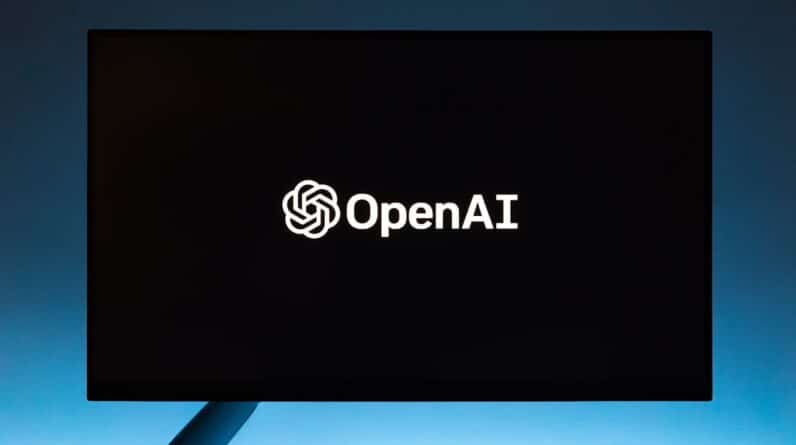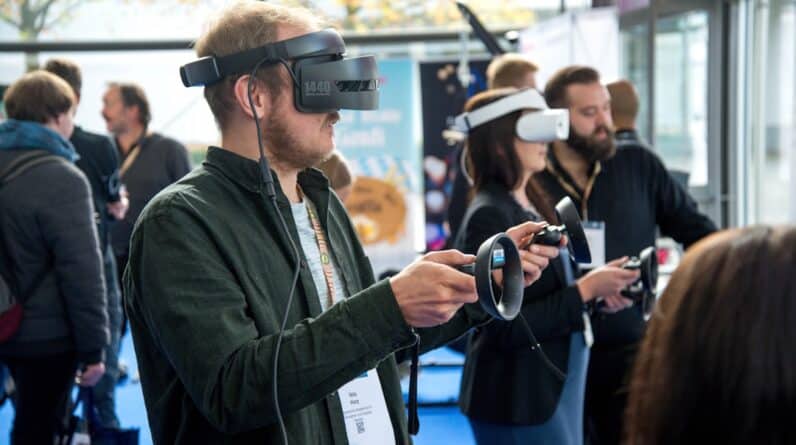As you delve into the fascinating world of artificial intelligence (AI), it becomes evident that this field is not the product of a single mind but rather a tapestry woven from the contributions of many brilliant individuals. Each pioneer has played a crucial role in shaping AI into what it is today, and among them, a few stand out as foundational figures. Understanding their contributions provides you with a deeper appreciation of the complexities and nuances of AI.
The journey of AI is marked by groundbreaking ideas, innovative technologies, and a relentless pursuit of knowledge, all of which have propelled humanity into an era where machines can learn, reason, and even mimic human behavior. In this exploration, you will encounter the visionaries who laid the groundwork for AI, each contributing unique insights and innovations. From the early theoretical frameworks to the practical applications that we see today, these pioneers have shaped the trajectory of AI research and development.
As you navigate through their stories, you will discover how their collective efforts have not only advanced technology but also sparked philosophical debates about the nature of intelligence itself. This article will take you through the lives and contributions of key figures in AI history, highlighting their significance in the ongoing evolution of this transformative field.
Key Takeaways
- The Father of AI is a title given to several key figures in the development of artificial intelligence.
- Alan Turing is considered the pioneer of AI for his work on the Turing Test and his contributions to computer science.
- John McCarthy is credited with coining the term “artificial intelligence” and organizing the first AI conference.
- Marvin Minsky is known as the father of neural networks for his work on the Perceptron and his contributions to cognitive science.
- Herbert Simon is recognized as the founding father of AI for his research in problem-solving and decision-making, which laid the foundation for AI.
Alan Turing: The Pioneer of AI
When you think of the origins of artificial intelligence, Alan Turing’s name inevitably comes to mind. Often referred to as the father of computer science, Turing’s work laid the theoretical foundation for what would eventually become AI. His groundbreaking paper, “Computing Machinery and Intelligence,” published in 1950, posed a fundamental question: Can machines think?
This inquiry not only challenged existing notions of intelligence but also set the stage for future discussions about machine cognition. Turing introduced the concept of the Turing Test, a criterion for determining whether a machine exhibits intelligent behavior indistinguishable from that of a human. This test remains a pivotal reference point in AI discussions today.
Turing’s contributions extended beyond theoretical musings; he was also instrumental in developing early computing machines during World War
His work on code-breaking at Bletchley Park demonstrated the practical applications of computational theory. You might find it fascinating that Turing’s ideas about algorithms and computation were revolutionary for his time and continue to influence modern computer science. His legacy is not just in his inventions but also in his ability to envision a future where machines could replicate human thought processes.
As you reflect on Turing’s impact, consider how his pioneering spirit continues to inspire researchers and technologists in their quest to create intelligent systems.

John McCarthy: The Coined Term “Artificial Intelligence”
As you explore the landscape of artificial intelligence, John McCarthy emerges as a pivotal figure who not only contributed significantly to the field but also coined the very term “artificial intelligence” in 1956. This moment marked a turning point in how researchers approached the study of intelligent machines. McCarthy organized the Dartmouth Conference, which is often regarded as the birthplace of AI as a formal discipline.
During this conference, he and other leading thinkers gathered to discuss the potential of machines to simulate human intelligence, setting ambitious goals for future research. McCarthy’s vision extended beyond mere terminology; he was deeply involved in developing programming languages that would facilitate AI research. One of his notable contributions was the creation of LISP, a programming language that became essential for AI development due to its flexibility and efficiency in handling symbolic information.
As you consider McCarthy’s influence, it’s clear that his work laid the groundwork for many AI applications we see today, from natural language processing to robotics. His ability to articulate a vision for AI and foster collaboration among researchers helped establish a vibrant community dedicated to exploring the possibilities of intelligent machines.
Marvin Minsky: The Father of Neural Networks
In your journey through AI history, Marvin Minsky stands out as a visionary whose work has had a profound impact on the development of neural networks. Often referred to as one of the founding fathers of AI, Minsky co-founded the MIT Artificial Intelligence Laboratory and dedicated his life to understanding how machines could emulate human cognitive processes. His research delved into various aspects of intelligence, including perception, reasoning, and learning, making significant strides in how we understand neural networks.
Minsky’s book “Perception,” published in 1981, explored how humans perceive and interpret their environment, providing insights that would later inform the design of artificial neural networks. He believed that understanding human cognition was essential for creating machines that could think and learn like humans. As you reflect on Minsky’s contributions, consider how his interdisciplinary approach—drawing from psychology, neuroscience, and computer science—has shaped modern AI research.
His work laid the foundation for advancements in deep learning and neural networks, which are now at the forefront of AI technology.
Herbert Simon: The Founding Father of AI

Herbert Simon’s contributions to artificial intelligence are both profound and multifaceted. As a cognitive psychologist and economist, Simon approached AI from a unique perspective that combined insights from human cognition with computational models. He was one of the first researchers to explore how machines could simulate human problem-solving abilities.
Simon’s work on heuristic problem-solving techniques paved the way for algorithms that mimic human decision-making processes. In 1956, Simon participated in the Dartmouth Conference alongside other luminaries in AI research. His belief that machines could replicate human thought processes was revolutionary at the time and has since become a guiding principle in AI development.
You might find it intriguing that Simon was awarded the Nobel Prize in Economics in 1978 for his work on decision-making within organizations, further underscoring his interdisciplinary approach to understanding intelligence. His legacy continues to influence contemporary AI research as scholars seek to create systems that not only perform tasks but also understand context and make informed decisions.
Arthur Samuel: The Father of Machine Learning
As you delve deeper into the evolution of artificial intelligence, Arthur Samuel emerges as a key figure in the development of machine learning—a subset of AI that focuses on enabling machines to learn from data and improve over time without explicit programming. Samuel’s work in the 1950s on checkers-playing programs showcased the potential for machines to learn through experience. He developed algorithms that allowed computers to analyze game positions and make strategic decisions based on previous outcomes.
Samuel’s pioneering efforts laid the groundwork for what would become a significant area of research within AI. His belief that machines could learn from their mistakes and adapt their strategies was revolutionary at a time when most computer programs were static and rule-based. You may find it fascinating that Samuel’s work not only advanced game-playing algorithms but also influenced various applications across industries, from finance to healthcare.
His legacy is evident in today’s machine learning models that power everything from recommendation systems to autonomous vehicles.
Geoffrey Hinton: The Modern Father of AI
In recent years, Geoffrey Hinton has emerged as a leading figure in the resurgence of interest in artificial intelligence, particularly in deep learning—a subfield that has transformed how machines process information. Often referred to as the “Godfather of Deep Learning,” Hinton’s research has been instrumental in advancing neural networks and their applications across various domains. His work on backpropagation algorithms has enabled significant improvements in training deep neural networks, leading to breakthroughs in image recognition, natural language processing, and more.
Hinton’s contributions extend beyond technical advancements; he has been an advocate for ethical considerations in AI development. As you explore his work, you’ll find that he emphasizes the importance of understanding both the capabilities and limitations of AI systems. His insights have sparked discussions about responsible AI deployment and the societal implications of intelligent machines.
Hinton’s influence is felt not only in academic circles but also in industry, where his research has driven innovations that are reshaping our world.
The Collective Effort in Advancing AI
As you reflect on the remarkable journey through the history of artificial intelligence, it becomes clear that no single individual can claim sole ownership over this transformative field. Instead, it is a collective effort marked by collaboration, innovation, and an unwavering curiosity about what machines can achieve. Each pioneer discussed has contributed unique insights and breakthroughs that have propelled AI forward, creating a rich tapestry of knowledge that continues to evolve.
The future of artificial intelligence holds immense promise as researchers build upon the foundations laid by these visionaries. As you consider your own role in this ongoing narrative—whether as a researcher, developer, or simply an enthusiast—you are part of a larger community dedicated to exploring new frontiers in technology. The collective efforts of these pioneers remind us that progress is often born from collaboration and shared ideas.
As we move forward into an era where AI plays an increasingly integral role in our lives, it is essential to honor their legacies while striving for responsible innovation that benefits society as a whole.
If you are interested in learning more about the impact of artificial intelligence on cybersecurity, you should check out this article. It delves into the ways in which AI is being used to enhance cybersecurity measures and protect against cyber threats. This article provides valuable insights into the intersection of AI and cybersecurity, shedding light on the innovative solutions being developed in this field.
FAQs
Who is considered the father of AI?
The father of AI is considered to be John McCarthy, an American computer scientist and cognitive scientist who coined the term “artificial intelligence” in 1955.
What are John McCarthy’s contributions to AI?
John McCarthy is known for his significant contributions to the field of AI, including the development of the LISP programming language, the creation of the AI laboratory at Stanford University, and the organization of the Dartmouth Conference in 1956, which is considered the birth of AI as a field of study.
Are there other notable figures in the development of AI?
Yes, there are other notable figures in the development of AI, including Alan Turing, who is known for his work on the concept of a “universal machine” and the Turing Test, and Marvin Minsky, who co-founded the MIT AI Laboratory and made significant contributions to the field.






